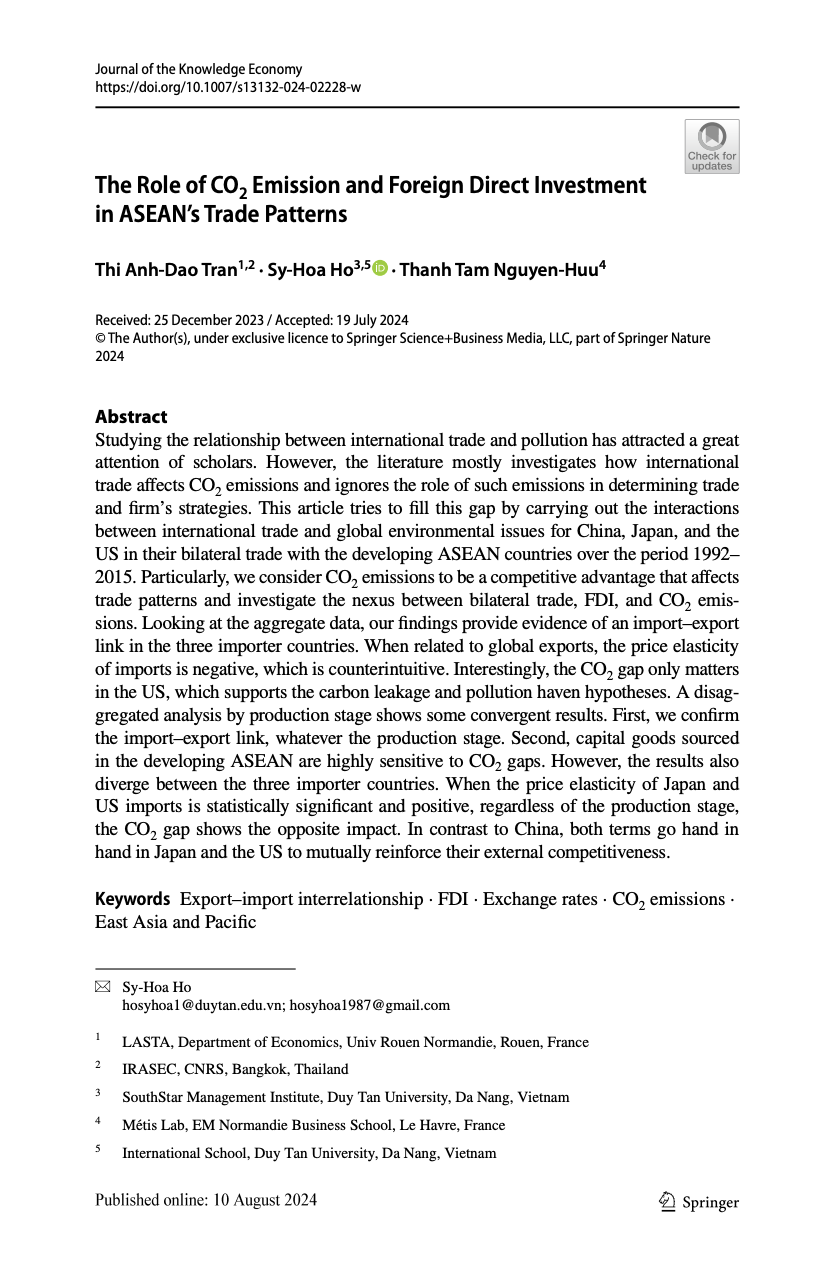
Keyword(s)
Author(s)
Thi Anh-Dao Tran
Country(ies)
Publisher
Published Date
Access
DOI
Studying the relationship between international trade and pollution has attracted a great attention of scholars. However, the literature mostly investigates how international trade affects CO2 emissions and ignores the role of such emissions in determining trade and firm’s strategies. This article tries to fill this gap by carrying out the interactions between international trade and global environmental issues for China, Japan, and the US in their bilateral trade with the developing ASEAN countries over the period 1992–2015. Particularly, we consider CO2 emissions to be a competitive advantage that affects trade patterns and investigate the nexus between bilateral trade, FDI, and CO2 emissions. Looking at the aggregate data, our findings provide evidence of an import–export link in the three importer countries. When related to global exports, the price elasticity of imports is negative, which is counterintuitive. Interestingly, the CO2 gap only matters in the US, which supports the carbon leakage and pollution haven hypotheses. A disaggregated analysis by production stage shows some convergent results. First, we confirm the import–export link, whatever the production stage. Second, capital goods sourced in the developing ASEAN are highly sensitive to CO2 gaps. However, the results also diverge between the three importer countries. When the price elasticity of Japan and US imports is statistically significant and positive, regardless of the production stage, the CO2 gap shows the opposite impact. In contrast to China, both terms go hand in hand in Japan and the US to mutually reinforce their external competitiveness.